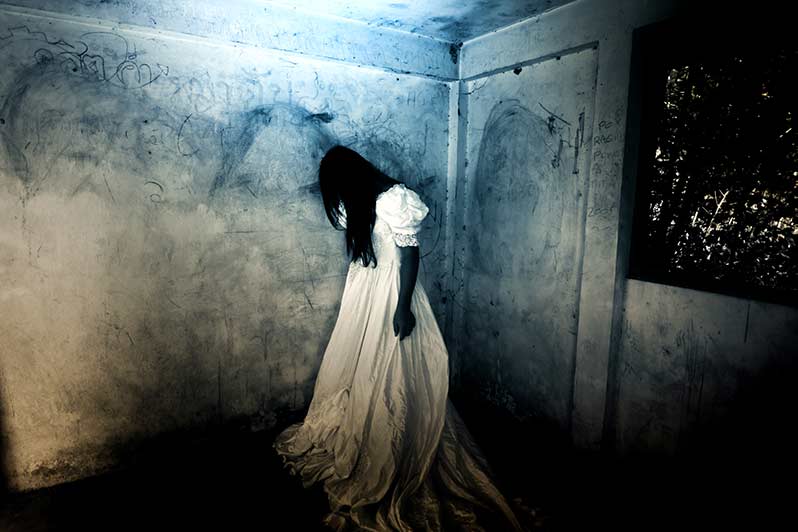
Want to write to market? Know your subject matter before tackling your first draft
Alot of people say write to market, but a lot of authors don’t seem to know what exactly that means. So here is my personal tick-list or framework for what I look at when I’m studying my chosen sub-genres. You’ll likely develop your own framework, but perhaps this can help you get started.
Keep in mind, do not copy someone’s plot, characters or world. This is not a recommendation for that.
But it is a recommendation to read and examine books in the subgenre you’re targeting — because that’s where your readers will be, and you need to understand what they’re expecting when they read a book in that subgenre.
Remember that the more granular you get, the more these subgenres bleed into one another. For example, I placed my fantasy novel Shadow Magic into these categories on Amazon:
- Werewolf & Shifter Thrillers
- Occult Suspense
- Witch & Wizard Thrillers
And it could easily fit a dozen others. But you’ll want to pick a single subgenre and study it closely.
Steps to get famililar with a subgenre
Here are the steps I recommend to authors starting our fresh in a subgenre.
Step one
Pick your genre. Fantasy, science fiction, romance, thriller, mystery, young adult?
Step two
Figure out the subgenres, and sub-subgenres.
I recommend picking one or two sub-subgenres that you can read and think you can enjoy writing. For example, UF (Urban Fantasy) can be split into:
- Female-led
- Male-led
Female-led can be split into:
- Witch
- Shifter
- Human dragged into the supernatural world
And so on and so forth.
Step three
Next, I recommend reading an absolute minimum of 40 books from no fewer than 10 different successful authors in that sub-subgenre. (What’s successful? Check Goodreads lists and the bestseller lists.) You want a good broad view of your sub-subgenre to make sure you don’t get too close and copy someone by accident. Ideally, I suggest you try to read 100 books from a minimum of 30 authors, but we all have time and energy constraints.
Step four
Study the structure. Now we get down to the nitty-gritty. Once I’ve picked my subsub-genre/s I look at overall story structure. Think about the following:
- Does your sub-subgenre tend to build and build until the big fight scene at the climax?
- Is it more a series of gradually bigger hills before the final kaboom?
- Is it more ebbs and flows?
Kurt Vonnegut did a famous riff about story shapes and the emotional arcs of storytelling. You may be surprised that most stories fit into one of these buckets, or archetypes.

Step five
Know the characters. What kind of protagonists do you find yourself rooting for in the books you’re now studying? What do they have in common?
I look at the following for a protagonist. Again, you want to compile a general view from a heap of books. You’re looking at general trends and averages. So if 30 out of your 40 books have female protagonists in their 20s, I’d aim for that. Look at:
- Age
- Gender
- Defining personality traits. Meyers Briggs can be handy for this. Personally, I think Urban Fantasy heroines tend to be ENTJ’s, but I’m an ENTJ and I adore UF so I could be biased.😁
- Tropes. The chosen one, hidden royalty, hard-boiled detective — the list goes on. Pick out the most common tropes you see in the protagonists.
- Names. What are the naming conventions for your sub-subgenre? Do they tend to be short and harsh? Long and full of apostrophes? Ridiculous like Blue-thistle Ash’en’li’kiea’ma III?
- Love interest.This is a pretty much the same list as the protag.
- Side characters.
Lots to consider here. Does the book start with the sidekicks right there or do they join the protag along the way?
What are the defining traits of the side characters?
Do they tend to be big, burly predators who bow down to the love interest, thus showing what a real alpha he is?
Do they tend to be smaller and weaker than the protagonist, thus showing what a strong bad-ass they are?
Do they tend to be rivals, thus adding tension, conflict and opportunities to show off the protag’s complexity and bad-ass nature? This is also used to show a strong character arc.
Do they tend to be allies, thus showing the protective side of the protagonist and helping form that found family nice and quickly?

Step six
Tease out the subplots. Particularly romance subplots. (Not all books in a sub-subgenre contain a storyline about a love interest, but many do.)
What does it look like on the pages? Does it tend to be insta-love? Slow-burn over eight books? Does the series end once they’ve gotten together? If not, how does the couple work together and what impact does the plot have on the relationship? Do they tend to stick to the one or do they tend to have a series of relationships over the course of the series? Does the protagonist have casual sex?
What is the breakdown between plot : description : emotion : romance : action?
I look at the ratio there. How much plot is there compared to the description, emotion, romance and action? What I mean by emotion is the quiet moments, often of introspection. They’re scenes that provoke emotion in the readers and give them some breathing room from the main plot. For example, these scenes could be a moment where the protagonist reflects back on a happy childhood memory … or looks forward to freeing her home planet.
Look at the narrative and the how the authors in your sub-subgenre handle description. Does it tend to be florid, poetic and detailed? Short, efficient, and only what’s absolutely necessary?
For example, my husband listens to a lot of military sci-fi and the description in those books tends to be focused and efficient. It adds color to the scene, but it very much focused on the armor, weapons, layout of the land as it pertains to an upcoming battle, etc.
Step seven
Look at the worldbuilding. How much worldbuilding is on the page for that sub-subgenre? Is it only what’s absolutely necessary for the plot and character arc? Is it focused only the small area around the plot? Does is go wider and deeper?
How much weight is put into the worldbuilding? Is it essential to the sub-subgenre, or is it just some pretty color?
Fight scenes. How much detail in in the fight scenes or action scenes? What type of detail? Where is the focus? How long are the fight scenes (what the movie folks call set pieces)?
For example, in paranormal romance, the fight scenes focus on the feel of the fight, the emotion, and the actual fight is very broad strokes and pretty short.
In military sci-fi they’re very detailed, very tactically focused, and very long. There is a lot of in-depth detail about the weapons, the attacks, the visual and emotional impact of those attacks, the tactics and logistics behind everything.

Step eight
A final item to pay special attention to is the narrative arc. This is often the interior storyline that speaks to a character’s emotional growth.
How do the characters approach the emotional rollercoaster of the book’s arc?
What sort of ride do these tales tend to take the reader on?
For example, my understanding of the typical romance arc is a buildup, give hope, tension, then tear them apart and rebuild them stronger before ending on a big high.
Do the stories you’re reading have more of an ebb and flow? Do they take you on a ride where there’s one big rise until — kaboom ‐ and a quiet denouement?
Once you have this list down, you can wrap your characters, plot and world around it so that you give readers of that sub-subgenre what they’ve demonstrated with their hard-earned pennies that they love. Thus giving you a better chance of them giving you some pennies for your books.
Don’t go chasing flash-in-the-pan trends in a particular category. Don’t read one bestseller in your sub-subgenre, apply this, and run with it. You need to cast your net wide and really get a feel for as much of that sub-subgenre as possible.
Go forth, read — and write. I hope this helps!






